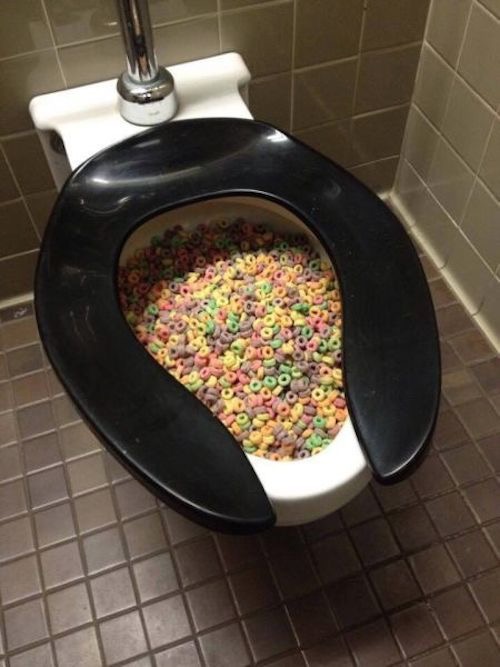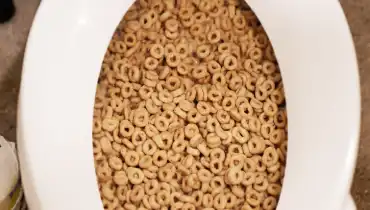This post in the next paragraphs in relation to Is it safe to flush food (especially rice) down the toilet? is absolutely enlightening. You should check this stuff out.

Intro
Lots of people are commonly confronted with the issue of what to do with food waste, especially when it concerns leftovers or scraps. One common concern that emerges is whether it's fine to purge food down the bathroom. In this article, we'll delve into the reasons why individuals might consider purging food, the repercussions of doing so, and alternative techniques for appropriate disposal.
Reasons individuals could think about purging food
Lack of recognition
Some individuals might not understand the possible damage caused by purging food down the commode. They may wrongly believe that it's a safe method.
Convenience
Flushing food down the bathroom may feel like a quick and simple remedy to disposing of undesirable scraps, especially when there's no nearby trash bin offered.
Idleness
In some cases, people might just select to flush food out of large negligence, without taking into consideration the effects of their activities.
Repercussions of flushing food down the commode
Ecological impact
Food waste that winds up in waterways can add to air pollution and damage marine communities. In addition, the water utilized to purge food can strain water sources.
Pipes problems
Purging food can lead to stopped up pipes and drains pipes, causing costly pipes repair work and aggravations.
Kinds of food that should not be flushed
Fibrous foods
Foods with fibrous structures such as celery or corn husks can get tangled in pipes and cause blockages.
Starchy foods
Starchy foods like pasta and rice can soak up water and swell, leading to obstructions in pipelines.
Oils and fats
Greasy foods like bacon or food preparation oils should never be flushed down the toilet as they can solidify and cause obstructions.
Proper disposal methods for food waste
Using a waste disposal unit
For homes equipped with waste disposal unit, food scraps can be ground up and flushed through the pipes system. Nonetheless, not all foods appropriate for disposal in this fashion.
Recycling
Particular food packaging products can be recycled, reducing waste and decreasing ecological impact.
Composting
Composting is an eco-friendly way to take care of food waste. Organic products can be composted and used to improve soil for gardening.
The value of correct waste administration
Decreasing ecological injury
Proper waste administration practices, such as composting and recycling, aid reduce contamination and preserve natural deposits for future generations.
Protecting plumbing systems
By preventing the practice of flushing food down the bathroom, property owners can stop pricey plumbing repair services and keep the honesty of their pipes systems.
Conclusion
To conclude, while it might be appealing to flush food down the commode for comfort, it is essential to recognize the possible effects of this action. By embracing correct waste management practices and disposing of food waste responsibly, individuals can contribute to healthier pipes systems and a cleaner atmosphere for all.
FLUSH FOOD DOWN THE TOILET?
FLUSHING FOOD CAN CAUSE BLOCKED DRAINS IN YOUR HOME
All of the plumbing fixtures in your home are connected to the same sewer pipe outside of your home. This outdoor sewer pipe is responsible for transporting all the wastewater from your home to the Council sewer mains. Even small pieces of food that go down the kitchen sink can cause problems for your sewer. It should therefore be obvious that flushing larger bits of food, such as meat, risks a clog in either the toilet itself or the sewer pipes. Flushing greasy food is even more problematic because oil coagulates when it cools, coating the interior lining of your pipes.
THE TOILET IS NOT A BIN
Food isn’t the only thing that people shouldn’t be flushing down the toilet. People use the toilet to dispose of all kinds of things such as tampons, makeup wipes, dental floss, kitty litter and even underwear. Water goes to great lengths to educate residents about the high costs and stress placed on wastewater treatment systems simply from people flushing the wrong stuff down the toilet. It costs taxpayers millions of dollars each year, and homeowners thousands in blocked drain repairs.
FLUSHING FOOD IS A WASTE OF WATER
Flushing food is a waste of our most precious resource - water. In June this year Level 1 water restrictions were introduced to protect water supply from drought conditions. Much of New South Wales continues to be affected by prolonged drought with recent figures revealing up to 97 per cent of the state remains in drought. Depending on whether you have a single or dual flush toilet, every single flush uses between five and 11 litres of water. In the current climate this is a huge amount of water to be wasting on flushing food that should be placed in the bin (or better yet, the compost).
https://www.jabplumbingsolutions.com.au/blog/can-you-flush-food-down-the-toilet

I have been very fascinated by Flushing Food Down the Toilet? and I'm hoping you enjoyed the blog post. Sharing is good. Helping people is fun. Thanks for your time invested reading it.
Book Today!